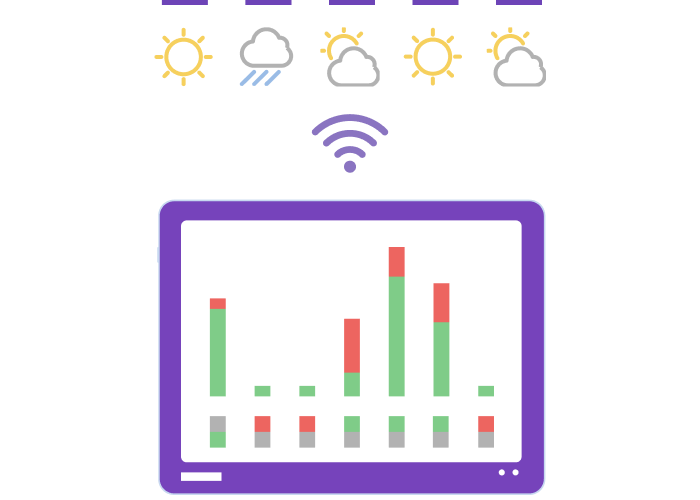Forecast-based control
Take control of your technical systems with our SCADA solutions
Forecast-based control
Some of today's snow melting systems are controlled by divining rods and horoscopes. At least that's how it seems. Our Forecast-based control puts data and statistics back into the system. The end result is a higher degree of accuracy – and lower energy consumption.
Snow melting systems can be huge drains on energy. That's why it's even more critical to control them properly. Today, many systems remain in standby mode for too long and are too slow to switch on and not good enough to switch off. It's simply a waste.

- Connected to Yr.no
- Smart street heating
- Snow melting systems
Feature details
Your own personal meteorologist
Winter is unpredictable – it's pointless to guess when the snow will come. That's why having your personal meteorologist is such a huge advantage. With smart weather forecast integration (a service from the Meteorological Institute, the Norwegian Broadcasting Corporation, and the Norwegian Mapping Authority that uses weather data and positions from YR), the circuit is preheated at the optimum time before the snow arrives. Not too soon and not too late. So you don't waste energy. The second the sensor detects snow on the ground, the system is already "good to go."
Let your worries melt away
With forecast-based control, you can sit back and relax. You don't have to worry about needing to press the start button yourself before the snowfalls. And you don't have to turn it off manually once the warm weather returns. Forgetting the first can be inconvenient. Failing the latter can be hugely expensive.
More than just snow
Snow melting systems may be the most obvious application for forecast-based control, but they are far from the only one. As an alternative to calendars or sensors, you can, for instance, connect up outdoor lighting to forecasts of sunrise and sunset times. You can also use forecast-based control to "prepare" the building itself when cold periods are forecast. This allows you to avoid a situation where, for example, your ventilation systems are blowing at full speed when the weather is at its coldest.